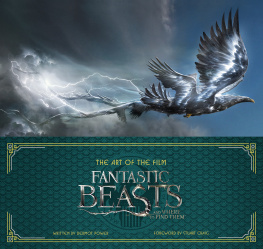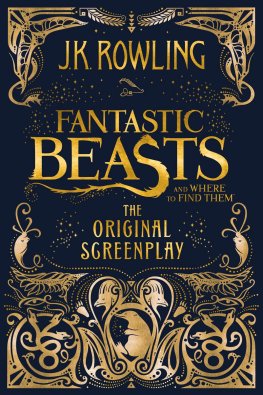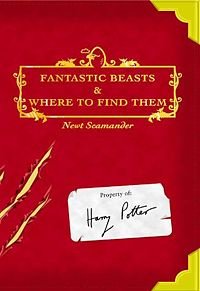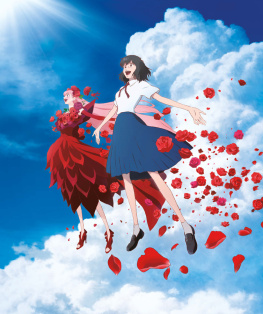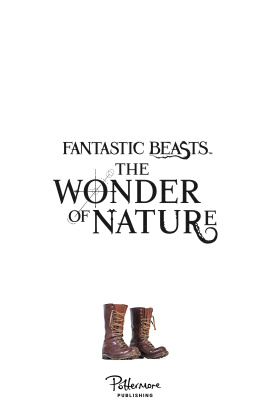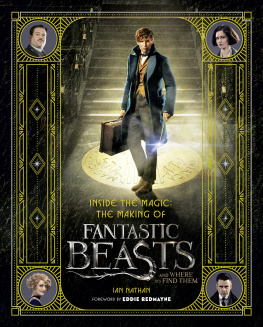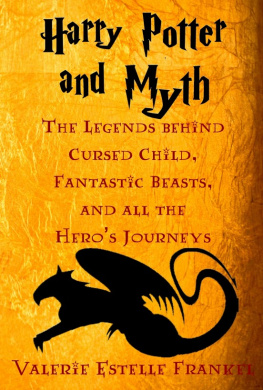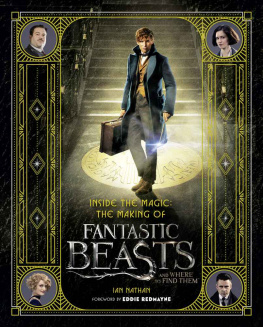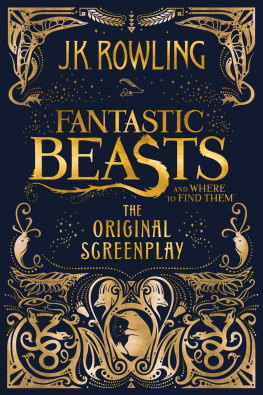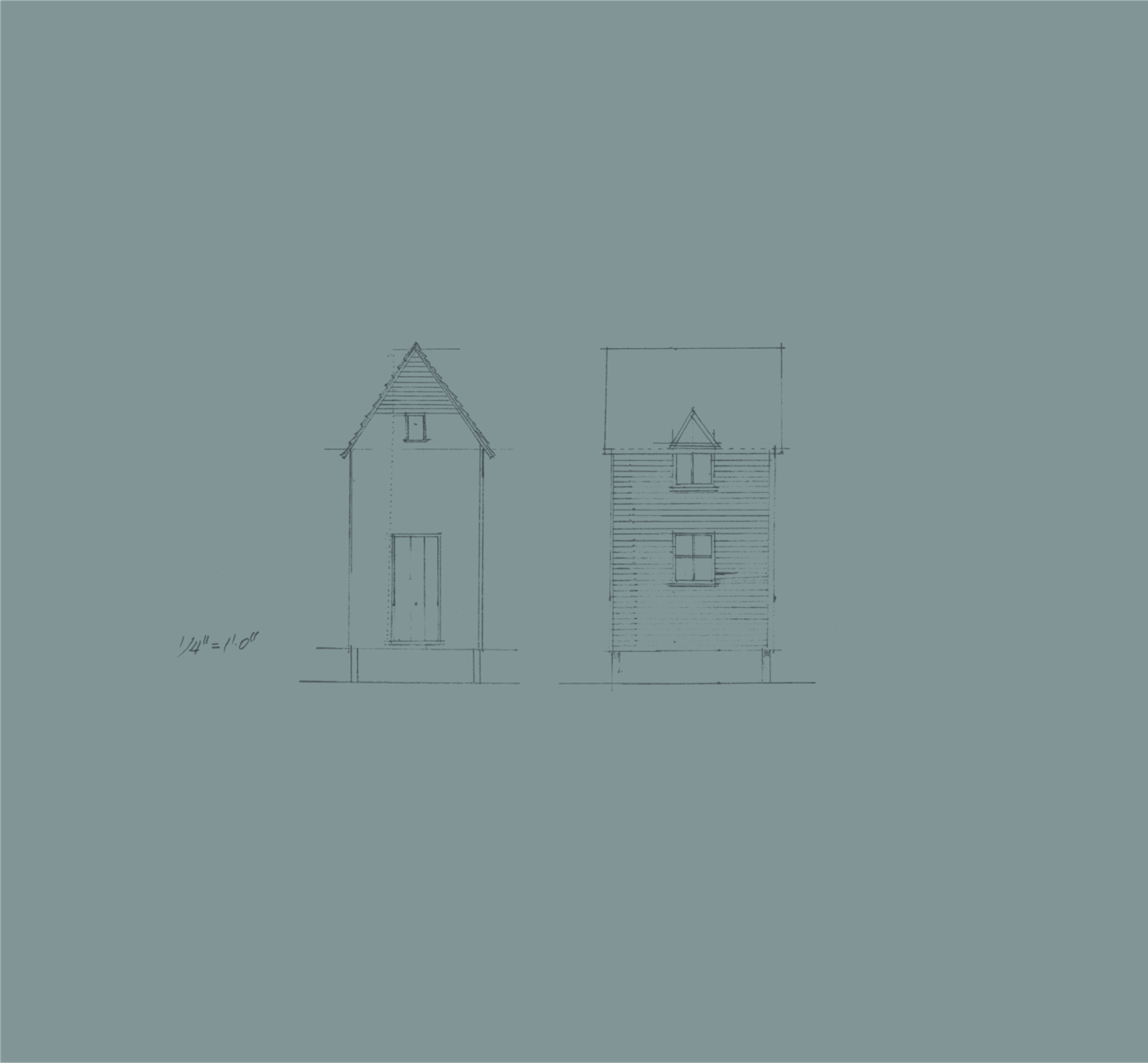Published in 2016 by
Harper Design
An Imprint of HarperCollinsPublishers
195 Broadway
New York, NY 10007
www.harpercollins.com
www.hc.com
Copyright 2016 Warner Bros. Entertainment Inc.
FANTASTIC BEASTS AND WHERE TO FIND THEM characters, names and related indicia are & TM Warner Bros. Entertainment Inc. WB SHIELD: TM & WBEI.
J.K. ROWLINGS WIZARDING WORLD TM J.K. Rowling and Warner Bros. Entertainment Inc. Publishing Rights JKR. (s16)
Cover design HarperCollinsPublishers Ltd 2016
Cover layout design HarperCollinsPublishers Ltd 2016
First Printing, 2016
Project Editor: Chris Smith
Editor: Georgie Cauthery
Production Manager: Kathy Turtle
HarperCollins would like to thank David Heyman, Stuart Craig, Victoria Selover, Elaine Piechowski, Melanie Swartz, Jill Benscoter, Gina Cavalier & Niki Judd.
All rights reserved under International and Pan-American Copyright Conventions. By payment of the required fees, you have been granted the non-exclusive, non-transferable right to access and read the text of this e-book on screen. No part of this text may be reproduced, transmitted, down-loaded, decompiled, reverse engineered, or stored in or introduced into any information storage and retrieval system, in any form or by any means, whether electronic or mechanical, now known or hereinafter invented, without the express written permission of HarperCollins.
Library of Congress Control number: 2016943600
Source ISBN: 9780062571335
Ebook Edition November 2016 ISBN: 9780062684783
Version: 2016-11-11
A ll the illustrations in this book are computer generated.
Responsible for all these were seven concept artists, one man bands, working in-house. Also several more, often working in teams, in the Visual Effects Houses. Each was tasked, according to their specialities, with creating concepts or illustrations for manufactured props, physical sets, set extensions, creatures, creature habitats.
To sell an idea, 2D sketches are often used, but with creatures it can be as quick to build a 3D model, the start of a continuing process of building, rendering, compositing in which the model evolves into a highly detailed creature. A very technical exercise but the most important decisions taken during this process are not technical but artistic ones, concerning proportion, shape, character and mood.
Fast-developing software can mean huge programmes to learn and keep up with. But whether sketch or model and no matter how technically complicated, it is a work of art. A flick of the brush can be hugely significant.
Its pencil and paper, light and form but these artists can draw like Raphael and model with light like Caravaggio. Its magic made to look simple and thats hard.
STUART CRAIG

NEWTS SHED There was much discussion about how tailored Newts world should be. In keeping with the notion that his primary concern is keeping the beasts happy and safe, he does just enough and doesnt worry too much about clean lines and perfect edges. The unfinished border of the wood hill supports this idea. DP
M y first introduction to the wizarding world of Harry Potter was when my twelve-year-old son was reading the books he loved them and would not look up from the page until the particular instalment was finished. I had also heard from friends, who were reading the books to their younger children, who admitted that they were actually quite good and that they couldnt put them down after the kids had gone to sleep.
Eventually I read them myself and saw that, even though they were aware of and occasionally influenced by fantasy books that had gone before, J.K. Rowlings world was very particular familiar and real and contemporary, even when they were full of magic and wonder and mystery. It is this placing of the extraordinary alongside the very ordinary that makes her invented world so interesting to design and it was the guiding design philosophy in the early Harry Potter films as well as in Fantastic Beasts and Where to Find Them .
Stuart Craig, our production designer and guiding light in the Potter art department during the early 2000s, often reminded us to keep our designs real the magic would be more extraordinary and believable when framed by a world that had weight and structure and history. Hogwarts is extraordinary but we believe the architecture even when it is as strange as Dumbledores triple tower.
I took these lessons with me to other films and franchises and found myself often quoting Stuart and referring back to him and the world he had evolved for all eight Potter films. The lessons learned about design were universal and long lasting.
So I was delighted when Stuart called me a decade later to ask if l would return to the fold for the latest J.K. Rowling wizarding adventure directed by David Yates and produced by David Heyman. Both Davids shared Stuarts belief in grounding our designs in reality when teasing out the design narrative of a character, creature or place. J.K. Rowlings wonderfully evocative writing made our task much easier, and David Yates was wholly supportive of the approach: he would often say it must be believable it must be intuitively true.
The design narrative is very hard to explain in a single sentence without sounding pretentious, but is very important. It is finding the story of a design. A simple example is a tree blown by the wind. What is the tree trying to do? Its trying to grab light from the sun. How does it do this? It grows towards the sun. What is holding it back? Gravity and the wind and the earth. Once you have these story elements then designing is much easier.
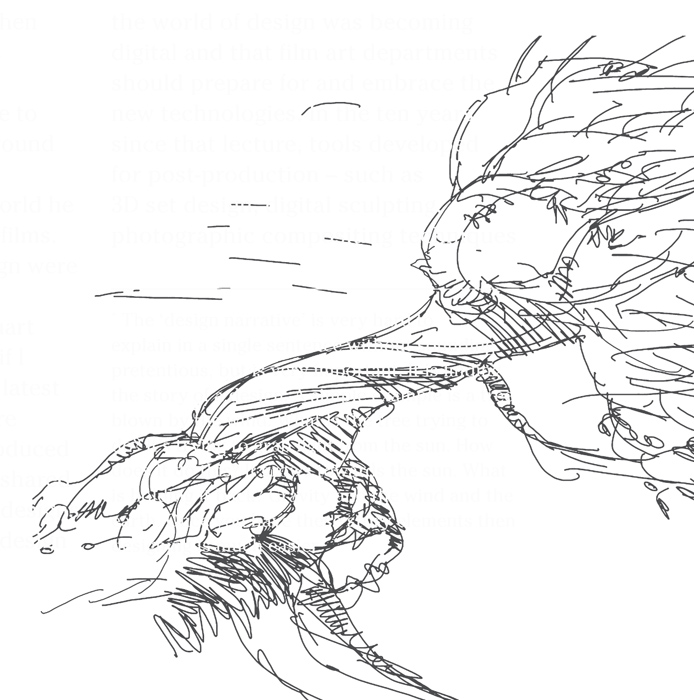
In 2005, I attended a lecture Stuart delivered in Berlin about how the world of design was becoming digital and that film art departments should prepare for and embrace the new technologies. In the ten years since that lecture, tools developed for post-production such as 3D set design, digital sculpting, photographic compositing techniques and animation became available to concept artists and the pre-production team. The art department I joined for Fantastic Beasts had space for the traditional and the new: the draughting tables and pencils still favoured by a generation of designers, whose depth of experience was irreplaceable, and the newer, tech-savvy, mostly younger artists who sat in front of computer screens. Stuart was comfortable with both because the rules for good design are always the same, whether pencil on paper or pixels on a screen.
In the intervening years, the number of films that needed concept artists had expanded enormously as the studios invested in more and more big-budget visual effects-heavy films. And there were many more concept artists the typical art departments two or three became six or seven, but the costume department also had their team, as did props, and creatures; in fact, any department that saw the value in having a design idea presented with visuals from sketch to fully rendered illustration. The biggest supplier of concept art became the VFX (visual effects) department, which split and branched in to several different teams attached to the various VFX houses all over the world. The VFX artists were now integral to the pre-production design phase of any film. And on Fantastic Beasts we were all on site at Leavesden sharing and evolving the design together, guided by Stuart, the Davids and J.K. Rowling herself.

